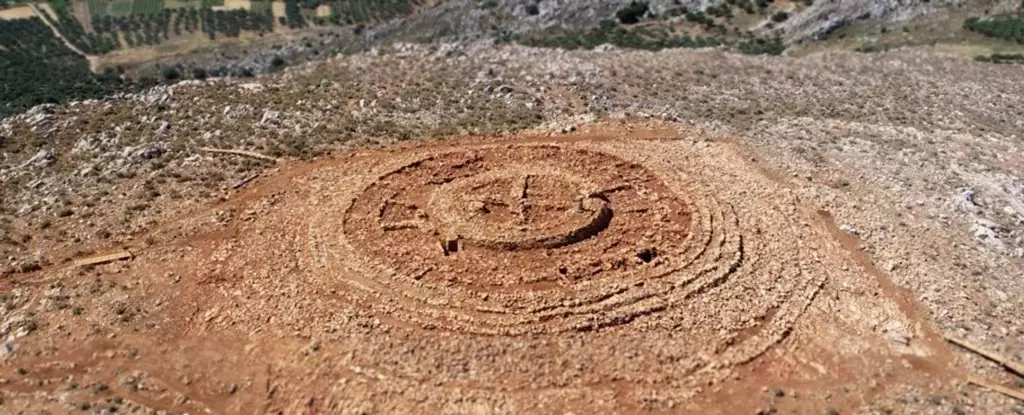Recently, a groundbreaking discovery was made on the island of Crete in Greece. Archaeologists found a ring-shaped stone monument dating back 4,000 years at the peak of Papoura Hill, near the town of Kastelli. The structure spans 1,800 square meters and is believed to have had a significant ritualistic or religious purpose.
The newly unearthed monument on Papoura Hill is unlike any other Minoan structure found in Crete to date. Comprised of eight concentric rings of stone, with an average thickness of 1.4 meters, this circular labyrinthine formation stands out due to its hilltop location and distinctive design. The architects responsible for this monument were from the Minoan culture, known for their peak sanctuaries and unique religious artifacts.
The Greek Culture Ministry suggests that the circular stone structure may have been used for ritual ceremonies involving the consumption of food, wine, and offerings. This theory is supported by the discovery of a large quantity of animal bones within the site, hinting at possible religious practices. The structure’s primary period of use dates back to 2000-1700 BCE, during the Middle Minoan era.
During the Middle Minoan period, the population of Crete experienced significant growth, leading to the construction of iconic Minoan palaces in cities like Knossos, Phaistos, and Malia. However, around 1750-1700 BCE, many structures, including the newly discovered monument, were destroyed, likely due to earthquakes. After 1450 BCE, the Mycenaeans from mainland Greece took control of the island, causing the decline of Minoan culture and its peak sanctuaries.
Preserving the Monument
The construction of the Kastelli airport project in Crete has led to the unveiling of numerous archaeological sites, with the discovery of the 4,000-year-old monument being one of the most significant. The Greek Culture Ministry has assured the public that the structure will be protected from modern development to allow for further archaeological research. Archaeologist Lina Mendoni, the Greek Minister of Culture, emphasized the importance of preserving this unique find for future generations.
The discovery of the ring-shaped stone monument on Papoura Hill in Crete sheds new light on the religious practices and architectural achievements of the ancient Minoan civilization. The monument’s distinctive design and hilltop location challenge our understanding of Minoan culture and its rituals. As archaeologists continue to explore this site, we can expect to uncover more secrets of the past and gain valuable insights into the rich history of Crete.


Leave a Reply